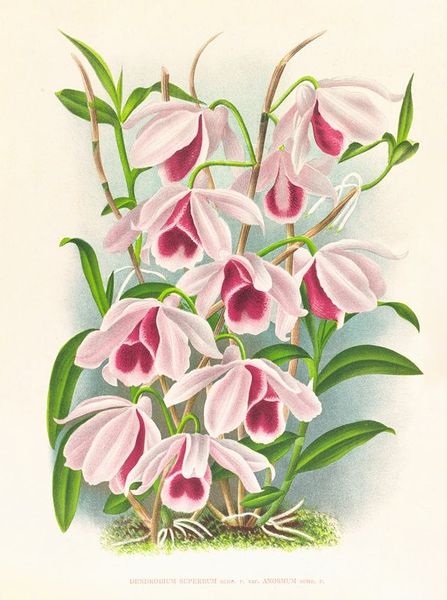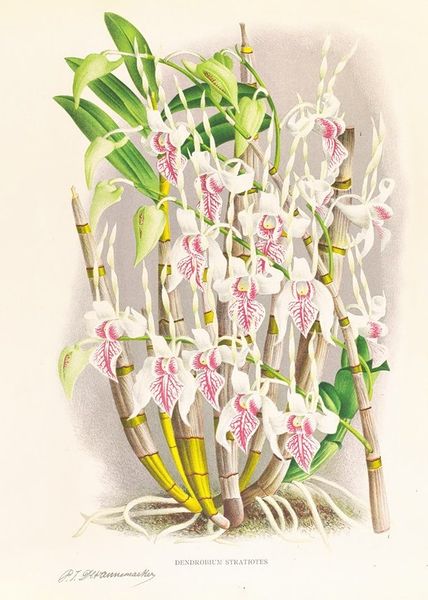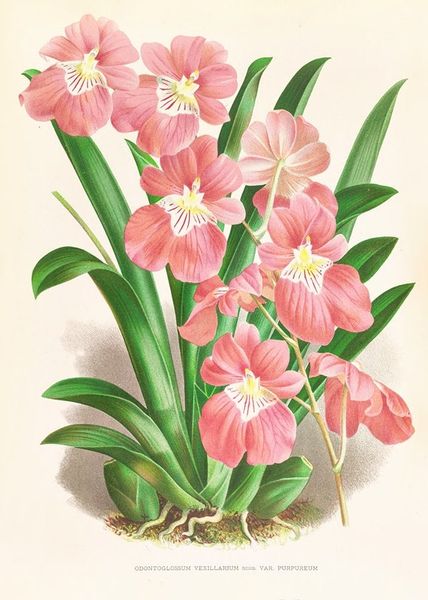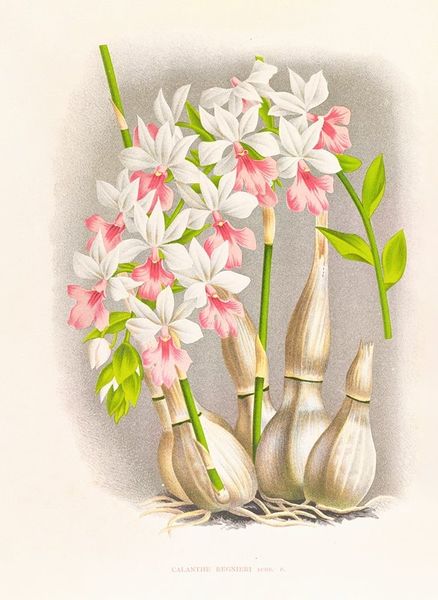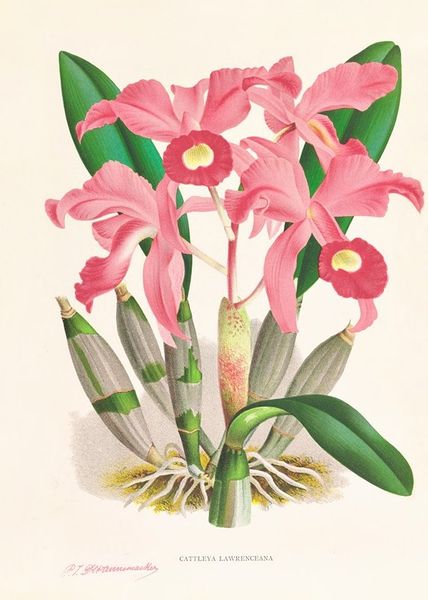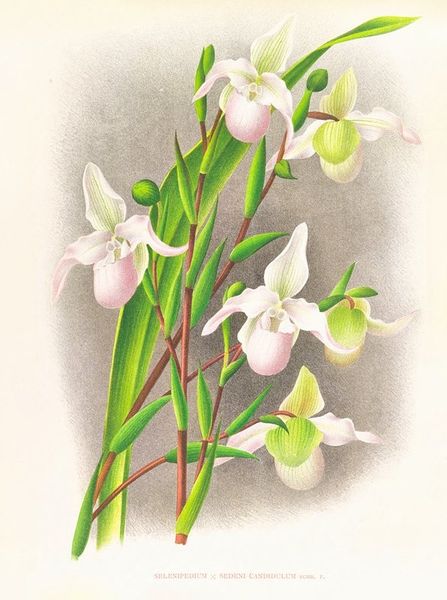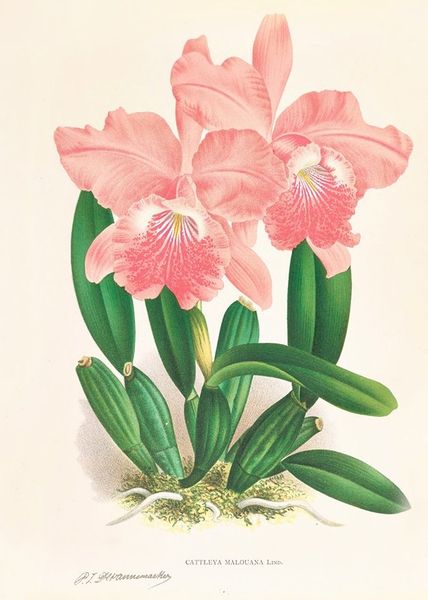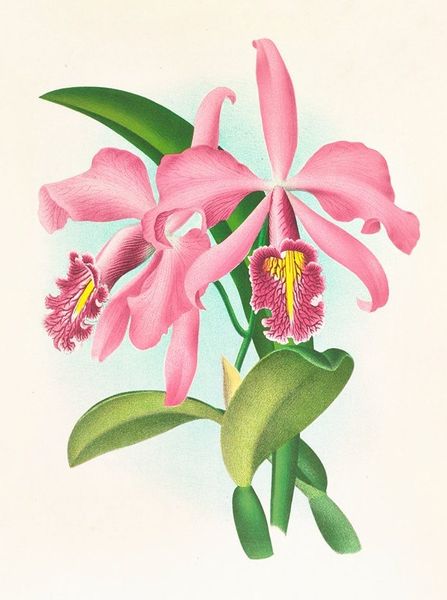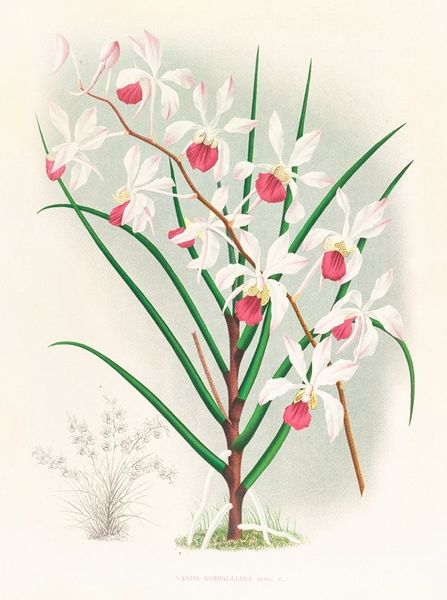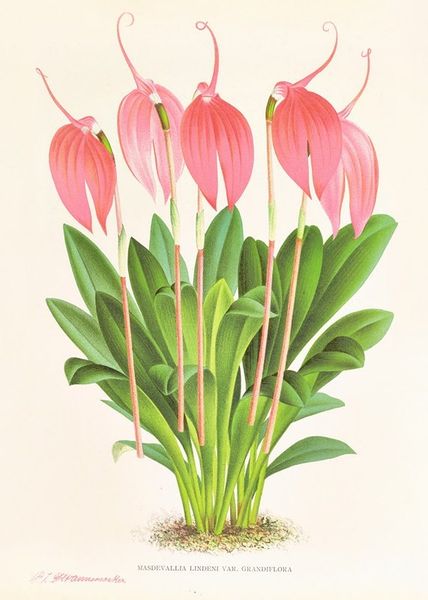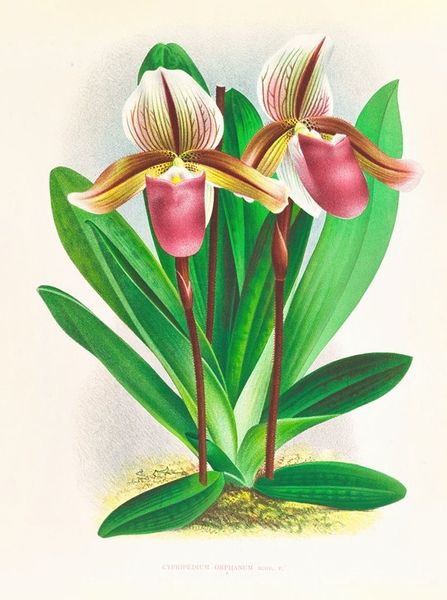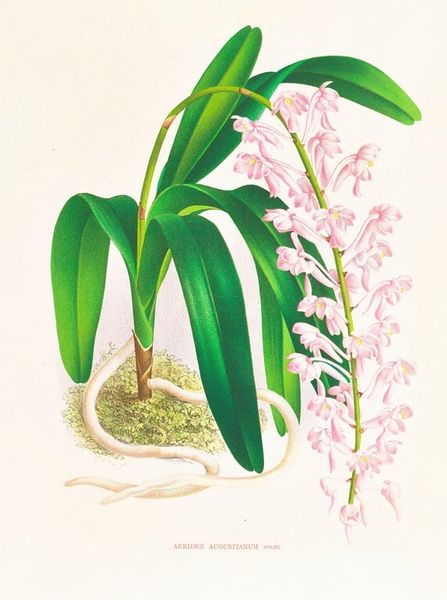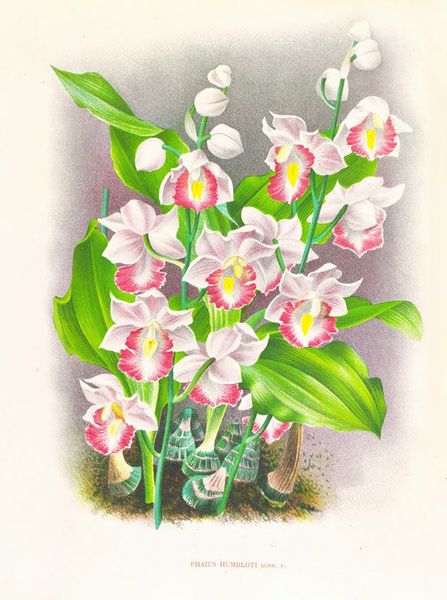
watercolor
#
vegetal
#
landscape
#
botanical illustration
#
watercolor
#
botanical drawing
#
watercolour illustration
#
botanical art
#
watercolor
Copyright: Public Domain: Artvee
Curator: Oh, how pretty. The soft pink and green shades create such a peaceful, almost fairytale-like mood. Editor: And I am very drawn to it. This is Jean Jules Linden's watercolor titled "Calanthe veitchi," dating roughly between 1885 and 1906. It exemplifies botanical art that was popular for scientific and aesthetic purposes at the time. But it also speaks to colonial history. Curator: Ah, yes, because the popularity of botanical illustrations often mirrored the rise of colonialism, right? Serving both to document and essentially, stake claim on natural resources. Editor: Exactly! The Calanthe veitchi, an orchid, like many exotic plants became symbolic trophies within European high society, fueling the commercial horticulture industry. What might appear simply beautiful on the surface has this complex backdrop of plant hunting, cultural exchange and exploitation. Curator: That's an important connection. And aesthetically, you have to admit that the contrast between the plump green stems at the base and the delicate pink orchids creates an appealing visual tension. How was botanical art received back then? Editor: Botanical drawings were crucial to scientific communication. They offered a universal visual language accessible even across language barriers. The images weren't merely representational, they provided a means for cultivation and commercial distribution worldwide, often directly benefitting specific political agendas. It definitely made people more connected globally! Curator: Considering the detail achieved in the rendering with watercolor is interesting. Linden must have had remarkable control and patience. Do you think there is commentary to be made from that choice of medium? Editor: It brings a sense of delicacy and reinforces its association with luxury and leisure—aspects inherently tied to its colonial associations. The very act of painting it in watercolor elevates its perceived value. But I suppose it also demonstrates a scientific fascination to exoticize things which is really unfortunate considering the plant. Curator: Absolutely, viewing artwork through that contextual framework can drastically shift its meaning and how we view it today. Thanks, I feel like I learned something new. Editor: Indeed. Examining the artwork from that period prompts us to reflect on its contemporary repercussions and it enriches our awareness when observing it today.
Comments
No comments
Be the first to comment and join the conversation on the ultimate creative platform.
